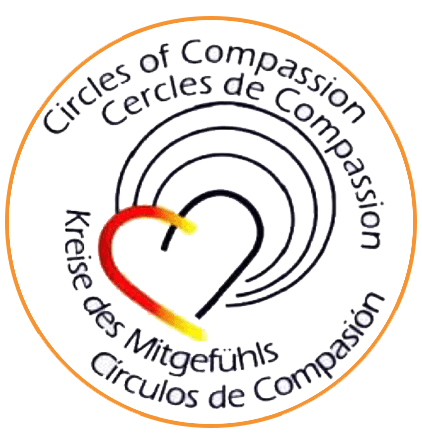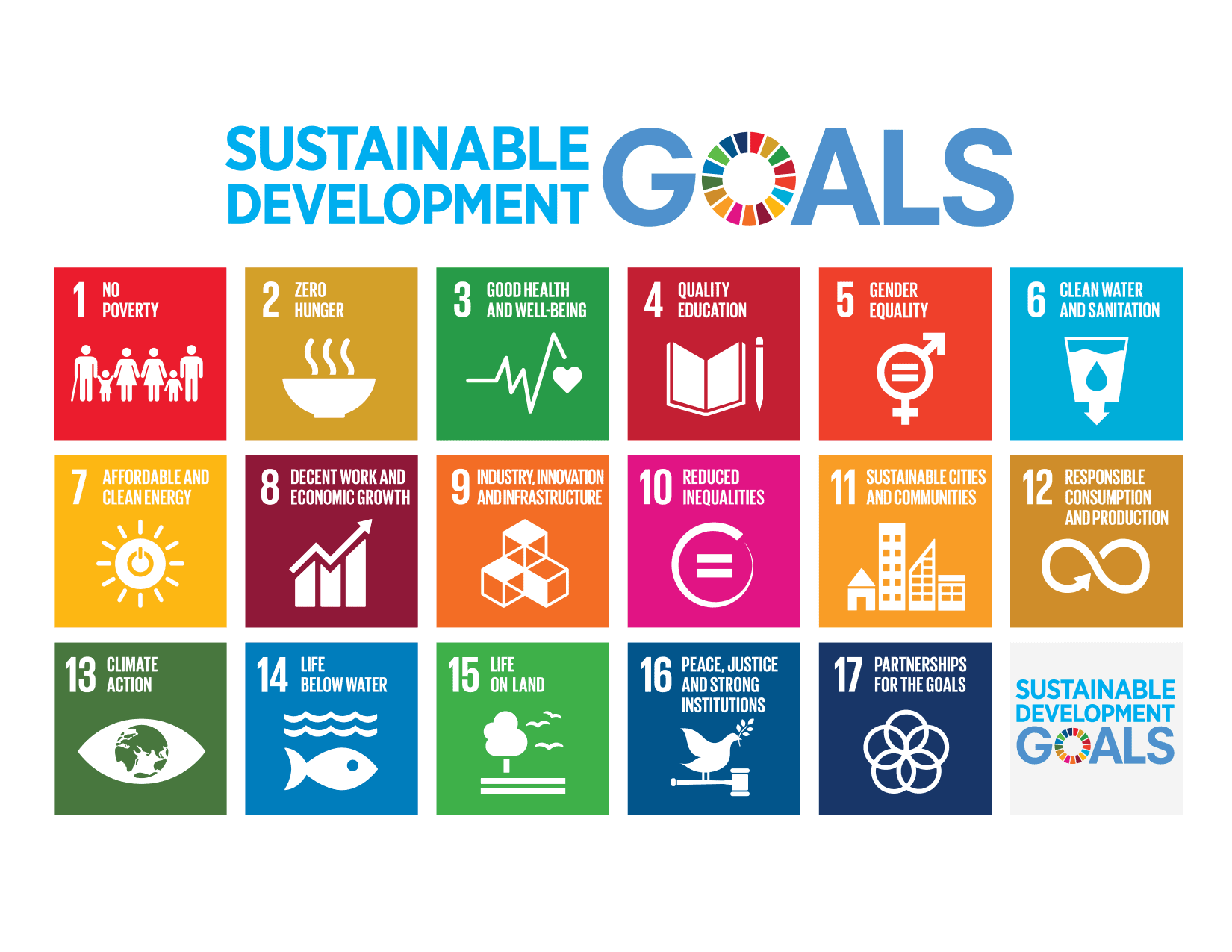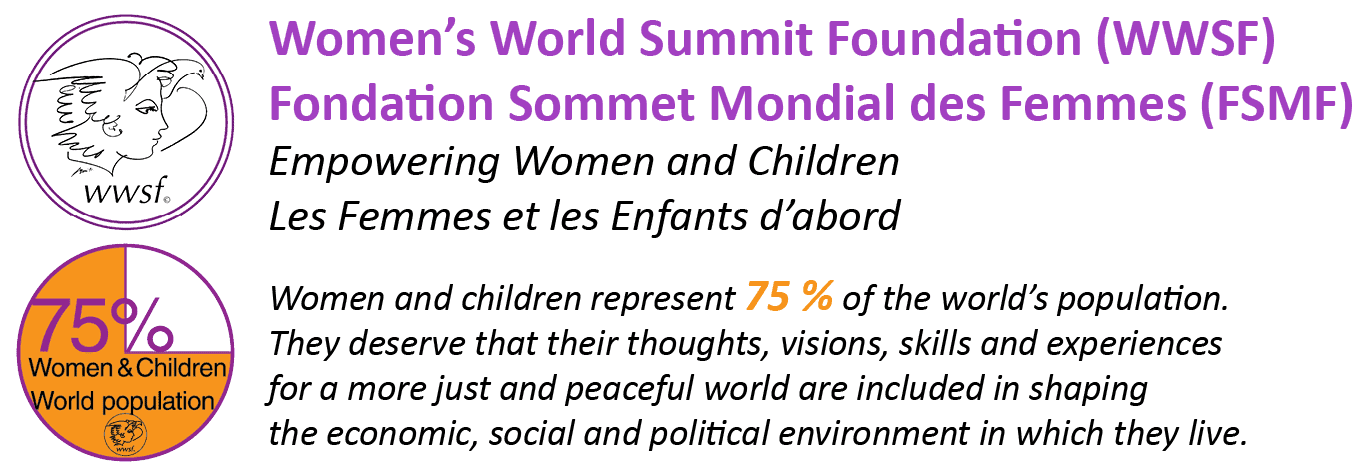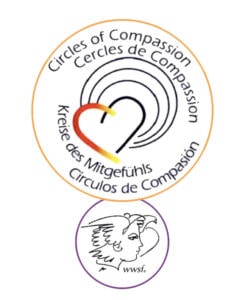Training workshops – Creating Community Circles of Compassion
How to Create Community Circles of Compassion
A strategy for a world fit for children and youth
Making the Sustainable Development Goal Target 16.2 a reality:
![]()
« End abuse, exploitation, trafficking and all forms of violence and torture against children”.
Introduction
The Women’s World Summit Foundation (WWSF) is pleased to share with civil society and the NGO community at large the idea of creating Community Circles of Compassion to change the world compassionately, especially now, when we are all caught up in a world-wide pandemic and need to build back better. Our future depends on the willingness of more and more people to recognize their responsibility for creating it by becoming agents of the future we want for our children and youth, and realize SDG # 16.2.
Register your Community Circle on our form below!
Violence against children – Facts & figures 2020 (source: UN SDG Target #16.2)
- Violence against children affects more than 1 billion children around the world and costs societies up to US$ 7 trillion a year.
- 50% of the world’s children experience violence every year.
- Every 5 minutes, somewhere in the world, a child is killed by violence
- 1 in 10 children is sexually abused before the age of 18.
- 9 in 10 children live in countries where corporal punishment is not fully prohibited, leaving 732 million children without legal protection.
- 1 in 3 internet users worldwide is a child and 800 million of them use social media. Any child can become a victim of online violence.
- Child online sexual abuse reports to NCMEC* has grown from 1 million in 2014 to 45 million in 2018.
- 246 million children worldwide affected by school-related violence each year.
- 1 in 3 students has been bullied by their peers at school in the last month, and at least 1 in 10 children have experienced cyberbullying. *(NCME: National Center for Missing and Exploited Children (USA)
What is a Circle?
In her book “Women Circling the Earth”, Beverly Engel offers a powerful guide to fostering community, healing and empowering. A circle is not just a gathering of people who sit in a circle on the floor or a meeting where the chairs are arranged in a circle. Circle meetings provide simple, yet powerful tools to help teach people how to communicate more honestly and openly. What we wish to promote is an alternative to hierarchical structures and confining systems. Circles can help us to
– listen without judgment
– foster cooperation and understanding
– help implement creative solutions to problems
– bridge differences
– help settle disputes and reach consensus
– encourage reconciliation and apology, etc.
We live in a world that cultivates separateness between people. When people join together in circles, they become keenly aware that such separateness does not really exist on a deeper level. Circles help alleviate the feeling that we stand alone against the harshness and violence of modern society. They remind us that we are all one.
Circle Guidelines
Circles provide a replenishing and sanctuary place and can be considered laboratories of grace where people can learn to relate in a way so conflicts and problems can be resolved. To participate in a circle, all you need is the desire, the willingness to attend the meetings, and agree to follow the guidelines. Each group determines their own rules but there are some universal circle guidelines that all agree to and help circle meetings to function more successfully. They include:
- Invite friends, family, and partners; create a circle center – a space where you celebrate a special time of relationships
- Welcome by the Circle convener and begin with a period of silent reflection
- One person speaks at a time – use a talking peace if necessary
- Speak from the heart and from your own experience
- Listen for wisdom with compassion and with discernment instead of judgment
- Invite silence and reflection when needed, in you and in the Circle
- Take responsibility for your experience and your impact on the Circle
- Make decisions, whenever possible, by consensus and write them down
- Encourage and welcome diverse points of view
- Agree to hold the tension, instead of rushing in to fix things
- Keep the confidence of Circle discussions; respect the trust relationship about what is shared
- Feel free to add other guidelines should Circle members find it useful to do so
- Close with fixing the date for your next meeting
Circle meetings are excellent places for people to learn positive lessons about power. Circles rotate leadership so that each member gets a chance to experience the role of the leader. There is no hierarchy, only interactive, distributed leadership, accountability and compassion.
Create your own Circle of compassion
Invite your friends, colleagues, and acquaintances and make sure to ask that people make a commitment to working within the circle to achieve the group objective. We encourage you to focus on the UN Sustainable Development Goals (SDGs) – Agenda 2030, and especially focus on SDG Target # 16.2 and making it your rallying point.

You may wish to add a spiritual dimension to your Circle
A prayer-meditation component in your circle connects members to each other at the soul level, deepens the group, reveals what really matters to the members, and brings spirit into the circle and through the circle into everyday life. When opening the circle, use a go-around fashion to encourage each person to share briefly what is closest to their heart and what is most important in their lives at that particular moment. To close the circle, acknowledge any situation (or topic) that was discussed and is in need of a remedy and have the circle give it its blessings. Close with a final go-around. It is important to provide ample time for silent prayer or contemplation for closing. Each person is free to pray in his/her own way. Circles are not intended to replace already established religious practices.
Tell us about your Circle(s)
We invite you to send a brief report on your Circle(s) of Compassion (name, place, theme, and email) to wdpca@wwsf.ch. It is planned to monitor the spread of Circles of compassion around the world, which will be published on our website, and to inspire others to participate in ending violence against children & youth.
For how many months or years, a circle meets depends on many factors, like the quality of energy in the circle, its objectives, number and stability of participants, etc. Some circles have been known to last well beyond 10 or 15 years. Each circle manages itself autonomously. It is natural for members to start supporting each other and as your circle matures, various service activities in the community and/or supporting projects around the world are introduced by the circle members. The United Nations Sustainable Development Goals – Agenda 2030 is a set of 17 objectives the world’s governments have pledged to realize by 2030. Circles of compassion can help meet these vital development goals – transforming our world compassionately and leaving no one behind.
Please feel free to copy and circulate the circle guidelines with the mention:
©CirclesOfCompassionWWSF2020
Acknowledgements
WWSF wishes to acknowledge all the pioneers in circle work who have helped bring this idea to the world, such as the Chakra Circle, the Circle of Seven, The Women’s International Dialogues, the Millionth Circle phenomena (a wonderful little book “How to Change Ourselves and The World), Peer Spirit, Women Circling the Earth, Calling the Circle: The First and Future Culture, the Visualizing alternative structures Video campaign, and others. In addition, we honor all the wise women everywhere, young and old, who continue to gather in circles as a way to bring the spirit of the community closer together in their circle of hearts.
Books on Circle formats and skills
- The Millionth Circle, Dr. Jean Shinoda Bolen, a gem to read and use
- Women Circling the Earth: A Guide Fostering Community, Healing and Empowerment, Beverly Engel
- Calling the Circle: The First and Future Culture, Christina Baldwin
- Wisdom Circles: A Guide to Self-Discovery and Community Building, Charles Garfield, Cindy Spring and Sedonia Cahill, and many more as circle building is a transformational tool to change the world.
 Registration and use of logo www.woman.ch #WWSFcompassionCircles
Registration and use of logo www.woman.ch #WWSFcompassionCircles
To register your Circle, use the link to the registration form and you will be included in the WWSF coalition network for future updates. https://www.woman.ch/19-days- of-activism-prevention-kit/training-workshops-creating-circles-of-compassion/
Once we have received your circle program, we will grant you the use of the Circle of compassion logo ©CirclesOfCompassionWWSF2020 and include you in the WWSF list. Your Circle will be mentioned in our annual Global Impact reports, with your organizational logo + website.
Banner: 19 themes introduced in the 2020 Campaign Kit https://www.woman.ch/19-days-of-activism-prevention-kit/
“19 Days of Activism for prevention of violence against children & youth 1-19 November” campaign
Choose a theme and transform your community with Circles of compassion to help reach the SDG Target 16.2
 Introduction to the Charter of Compassion
Introduction to the Charter of Compassion
For those among you who wish to learn more about compassion, we recommend that you check out the “Charter of Compassion”, a document that transcends religious, ideological, and national differences. Supported by leading thinkers from many traditions, the Charter activates the Golden Rule around the world.
https://charterforcompassion.org/images/menus/charter/pdfs/CharterFlyer-2019.pdf
Affirm and Share the Charter for Compassion
The Charter for Compassion is a cooperative effort to restore not only compassionate thinking but, more importantly, compassionate action to the center of religious, moral, and political life. Compassion is the principled determination to put ourselves in the shoes of the other and lies at the heart of all religious and ethical systems. »
The text of the Charter for Compassion:
« The principle of compassion lies at the heart of all religious, ethical, and spiritual traditions, calling us always to treat all others as we wish to be treated ourselves. Compassion impels us to work tirelessly to alleviate the suffering of our fellow creatures, to dethrone ourselves from the center of our world and put another there, and to honor the inviolable sanctity of every single human being, treating everybody, without exception, with absolute justice, equity, and respect.
It is also necessary for both public and private life to refrain consistently and empathically from inflicting pain. To act or speak violently out of spite, chauvinism, or self-interest, to impoverish, exploit or deny basic rights to anybody, and to incite hatred by denigrating others—even our enemies—is a denial of our common humanity. We acknowledge that we have failed to live compassionately and that some have even increased the sum of human misery in the name of religion.
We, therefore, call upon all men and women to restore compassion to the center of morality and religion ~ to return to the ancient principle that any interpretation of scripture that breeds violence, hatred, or disdain is illegitimate ~ to ensure that youth are given accurate and respectful information about other traditions, religions, and cultures ~ to encourage a positive appreciation of cultural and religious diversity ~ to cultivate an informed empathy with the suffering of all human beings—even those regarded as enemies.
We urgently need to make compassion a clear, luminous, and dynamic force in our polarized world. Rooted in a principled determination to transcend selfishness, compassion can break down political, dogmatic, ideological, and religious boundaries. Born of our deep interdependence, compassion is essential to human relationships and to a fulfilled humanity. It is the path to enlightenment, and indispensable to the creation of a just economy and a peaceful global community. »
Link to the United Nations Sustainable Development Goals – Agenda 2030
https://www.un.org/sustainabledevelopment/sustainable-development-goals/
17 Goals for People, for Planet. The Sustainable Development Goals are a universal call to action to end poverty, protect the planet and improve the lives and prospects of everyone, everywhere. The 17 Goals were adopted by all UN Member States in 2015, as part of the 2030 Agenda for Sustainable Development which set out a 15-year plan to achieve the 17 Goals.
 Dates for 2020 workshops available in Workshops/Formation
Dates for 2020 workshops available in Workshops/Formation
Registration Form: Circles of Compassion
WWSF will send a confirmation email upon receipt of your registration. We thank you in advance for your participation. Together we can achieve what no-one can do alone.


